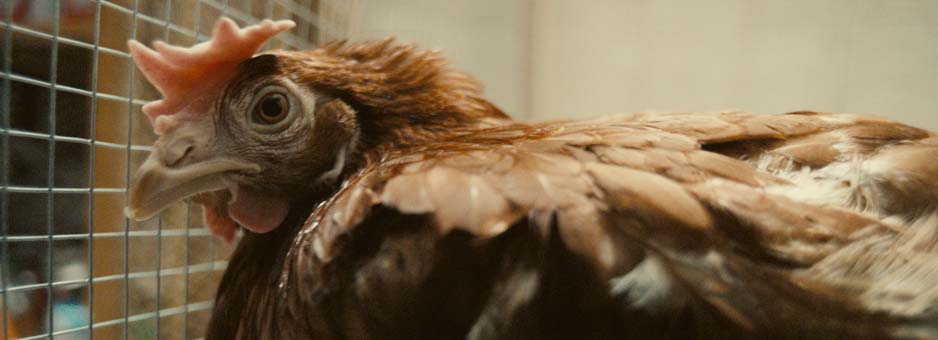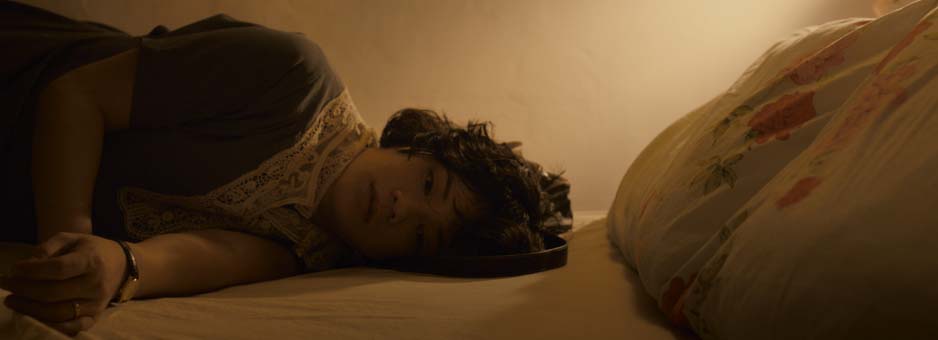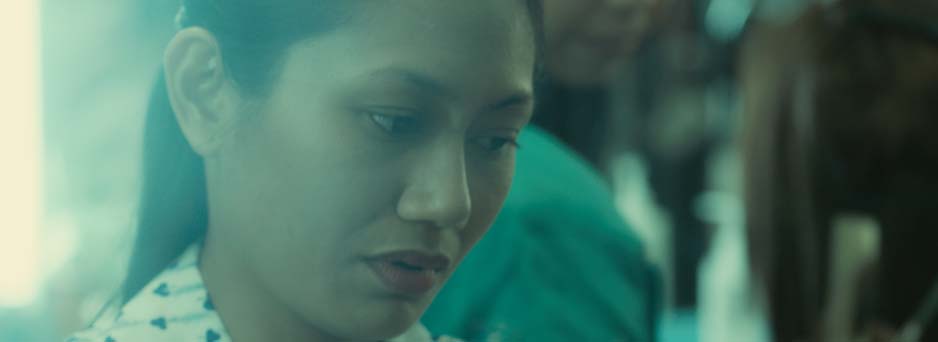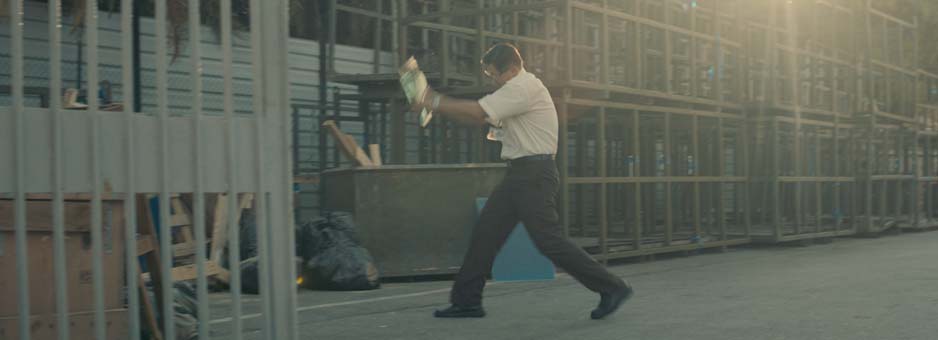- Panzehir
- Double Xposure
- Ram-Leela
- Ilo Ilo
- Elysium
- Welcome to the Punch
- Pacific Rim
- Bad Parents
- Archive





Grading the award-winning Ilo Ilo
Ilo Ilo was brought to the screens by Singapore director Anthony Chen, as his debut feature film. The film was introduced at Cannes Film Festival in May 2013 and garnered tremendous critical acclaim, subsequently becoming the first Singaporean movie to win the prestigious Camera d'Or award.
The film tells the story of a young Filipina woman from the Ilo Ilo province of the Philippines who becomes a maid for a Singaporean family in Singapore. It chronicles the relationship between the family and their new arrival, who like many Filipino women, came to the city in search of a better life.
Alongside Chen, the film was produced by Ang Hwee Sim and Wahyuni A. Hadi. Benoit Soler completed the cinematography on the movie and, working on Baselight TWO, it was down to Shane Bartley, lead colorist at Technicolor Bangkok, to work with Soler to create the desired 'look' for the award-winning production.
"We had two weeks to complete the grade," explained Bartley. "This timescale is really rare for me so it was quite refreshing and meant we had more time to be creative. We used the first four days to go through and give it a first pass and then we started going through and adding all the little, subtle details."
Bartley's brief from Chen regarding the desired look for the film was to match the period it was set: the '90s, during the Asian economic crisis. Chen set out to create this look and feel in a number of different ways, right through from the art direction to the props used in the shoot, such as a Sony Walkman and a Tamagotchi, for example.
Before starting the grade, Chen and Soler provided Bartley with a few visual references that they were looking to emulate for Ilo Ilo. The references included This is England, American Gangster, Argo and Tarkovsky's Sacrifice.
"The visual references helped me to focus on the look and feel we were trying to achieve," said Bartley. "From here we learnt that we wanted to accentuate the mixed lighting in the night scenes in the flat and that the fluorescent lights should always have a blue tint. We wanted the bedtime scenes to be kept natural - dark with a slightly bluish, green moonlight - and the offices of the mother and father to have dirty-looking, old yellow lighting and a cool bluish look, respectively.
"Anthony wanted the grade to be very natural, with an underlying tension of the economic climate," he added. "At one point I remember his feedback was that the film looked too clean and pristine, and that it needed a layer of grit to bring out a sense of the troubled time in which it was set."
"To help bring out the organic feel of the picture, we worked hard to emulate the look of 35mm grain," added Soler. "To integrate the feel of film we scanned some 5219 negatives and applied the look on top of the grade. This worked perfectly and brought a certain softness to the image, which had started to feel too digital."
Alongside Chen and Soler, Bartley also experimented with an ENR process during the grade, which coincidentally is a film processing technique invented at Technicolor by Ernesto Novelli Rimo. "I had noticed this ENR was one of the pre-set looks in Baselight's 'look layer'," said Bartley. "So that made experimenting with it a real time-saver. I was also given more specific references pertaining to outdoors day, indoors day, night time, bedtime, mother's workplace and father's workplace - so I had a lot of looks to work through."
In addition to these specific references there were two additional scenes that Chen and Soler wanted to create a particularly strong and unique look for. The first was the suicide scene at the flats, and the second was the scene when Terry, the maid, goes to the shopping mall and finds a part-time second job at a hairdressers.
"For the suicide scene we wanted to create a look that would match the feelings being experienced by Terry at this difficult time," recalled Bartley. "To do this, I lowered the contrast, brought the highlights right up and then blurred them, to give a really surreal feeling. For the mall scene, which on the raw files was a little warm, we decided to create a slightly fluorescent, light-green tinge, to create more of a depressing feeling, supplementing her income with this part time job."
Chen and Soler were heavily involved in the grade for the entire process, often with Soler and Bartley leading the way and Chen providing his creative comments on certain scenes.
"After experimenting with a few looks on the first day, Benoit left me to complete the first pass grade of the entire film, adding in his thoughts as we went through it, which took about four days to complete. Then we concentrated on finessing - making sure we liked the contrast from scene to scene, adding layers with shapes to bring up actors faces, adding shafts of light, darkening parts of the images and on top of that adding the ENR look, to bring a touch more detail back in the dark areas, cool it down slightly and de-saturate it overall."
Most of the movie was shot on the Alexa as ProRes, but due to space constraints the in-car shots were captured on the RED Epic 5k. "The camera combination worked really well," said Bartley. "Benoit was really good at balancing the cameras and getting the right level of exposure. He didn't push the ProRes too far either, which was great because sometimes the compression can create a lot of noise in the grade."
As the film was shot entirely handheld, Bartley was presented with a few challenges when grading some of the scenes, particularly when he wanted to add subtle shapes. "I had to track a lot of the shapes so they would naturally look like part of the image," he recalled. "Luckily, the Baselight tracker is fantastic and it really helped me to complete this process - it's fast, accurate and so easy to use."
One of the most challenging scenes for Bartley to match during the grade was the 'chicken scene'. "The scene had been shot at dusk and originally we tried keeping the dusk feel, but it did not sit right in the edit so Anthony decided it should be a daylight scene instead", he explained. "This meant I had to bring the lighting levels up and warm the image from its cooler evening temperature and bring back a touch of saturation while still maintaining the natural, subtle feeling."
Bartley did this in three layers: the primary grade layer, the overall look layer and the ENR layer on top. The final ENR layer was added at 50 per cent for the three shots at the chicken pen and then an extra layer was added for the two shots at the piano, to bring in some subtle shafts of light.
"Baselight helped ensure that this project was extremely smooth, from start to finish," explained Bartley. "It conformed perfectly and the multiple cursors made shot-to-shot matching a joy. It played everything back in real-time without any issues and the tracking made the shapes I created for the subtle adjustments maintain their accuracy throughout.
"The icing on the cake, for me, was to work with Anthony and Benoit, with their touching and creative story and beautifully shot images."
“Baselight helped ensure that this project was extremely smooth, from start to finish. It conformed perfectly and the multiple cursors made shot-to-shot matching a joy.”
Download


